Mother nature has created a wondrous variety of animals, constantly shifting and tweaking organisms through the power of evolution and natural selection. Over the billions of years of evolution, this has led to some striking creatures, including some that walk (or swim or fly) alongside us. Before we dive in, take a moment to remember that these are creatures to be cherished for their diversity — not feared or despised for their unique attributes.
Aye-aye

We’ve written about the aye-aye several times in the past, and it’s no surprise. Exclusively found in some parts of Madagascar, the aye-aye is probably the most bizarre primate in the world. It’s not just its overall look that puts it on this list, but also its long, thin fingers. In particular, the middle finger is longer than the others and is used to tap on trees, while listening for the presence of insects. If there are any insects (which are one of the aye-aye’s favorite foods, along with seeds and fruits), the primate will use its teeth to gnaw through the wood and get to them.
The aye-aye is also quite intelligent. It has a remarkable problem-solving ability and was even observed to use tools to extract food. Despite its distinctive appearance and intelligence, the aye-aye is considered endangered due to habitat loss and persecution by locals who believe it to be a harbinger of bad luck.
Potoo bird

Another weird-and-adorable addition to our list is the potoo bird. Also called poor-me-ones, after their haunting calls, the potoo bird is not one but seven species found in some parts of central and South America. Its striking appearance looks straight out of a Muppets show, but the potoo bird is a mysterious and elusive creature that captivates the imagination of naturalists and bird watchers alike.
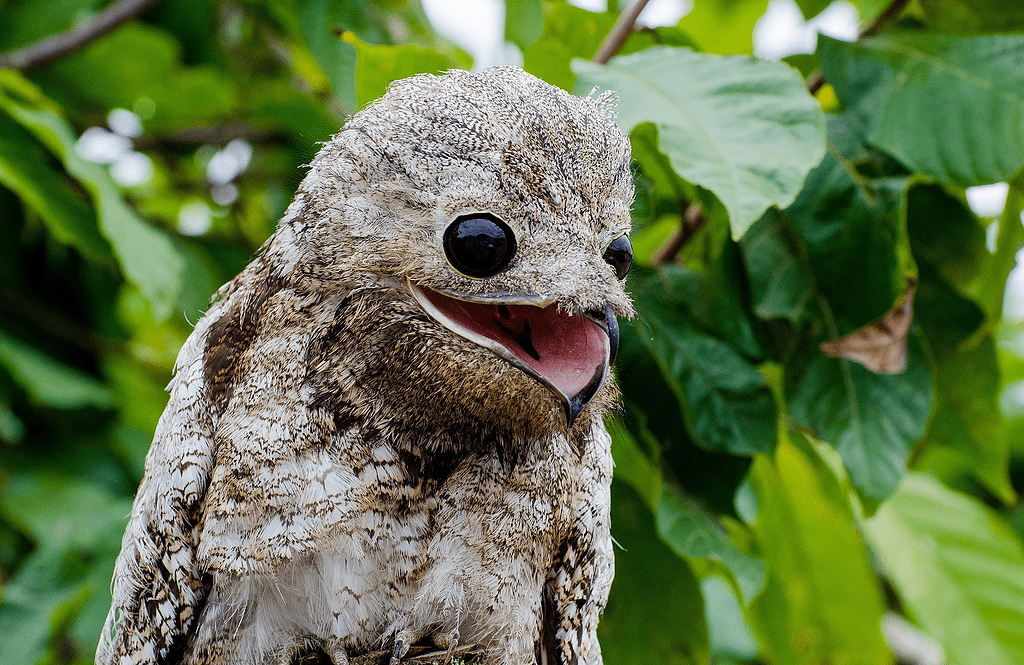
For starters, you can rarely see it — it does a great job at blending in with its surroundings, using the grayish-brown plumage that resembles wood and foliage so well. This camouflage, along with its ability to sit still, make it nearly impossible to spot. The potoo can also use its ‘third eye’ (small slits located on the upper eyelids that enable the bird to sense movement) to sense prey. During the night, when it’s more active, it also emits its striking calls. However, the bird is very difficult to observe in the wild, which is why we don’t know all that much about it.
Axolotl
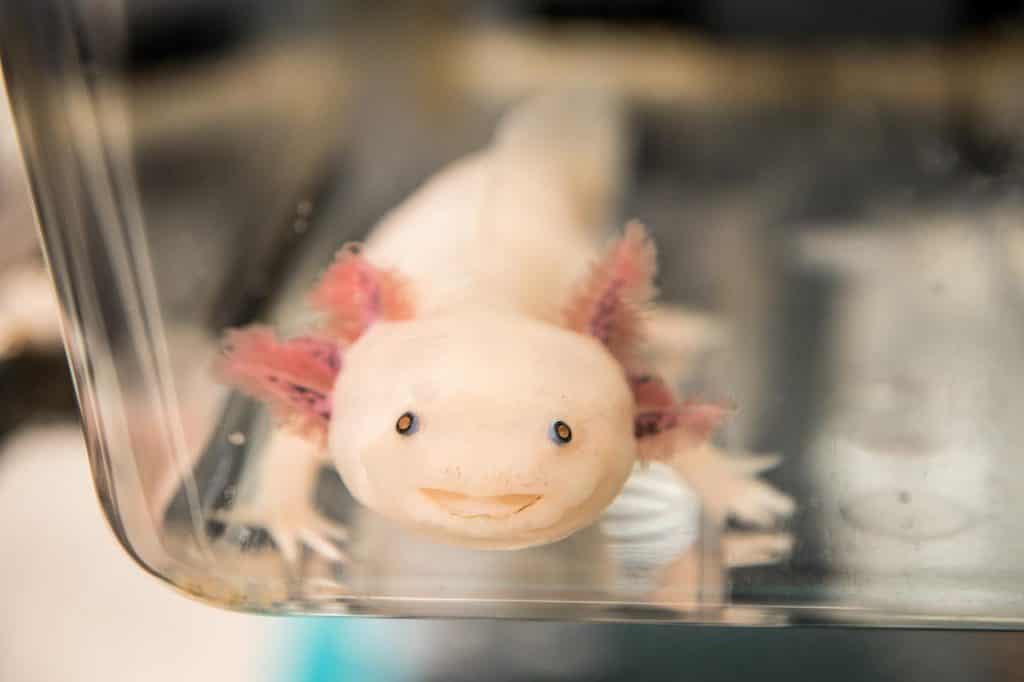
They may be adorably cute, but according to myth, the axolotl is actually the Aztec god of fire and lightning, Xolotl, who disguised himself as a salamander to avoid being sacrificed. These amphibians who live in Mexico are remarkable even without myth. Not only are they one of the few amphibians that reach adulthood without undergoing metamorphosis (they remain aquatic, which is a rarity among salamanders), but they can regenerate lost limbs and stay young throughout their lives. The axolotl can regrow its heart, lungs, skin, limbs, ovaries, and even brain, which is why researchers use it in studies on regeneration and rejuvenation.
But the axolotl is in trouble. They are listed as critically endangered in the wild, with a population of around under 1,000 adult individuals and dwindling habitats. Several lakes they called home were drained by Spanish settlers after the conquest of the Aztec Empire, and locals sold them as food in markets. There is yet hope for the tiny axolotl, but we need to take action to protect it.
Vampire Deer
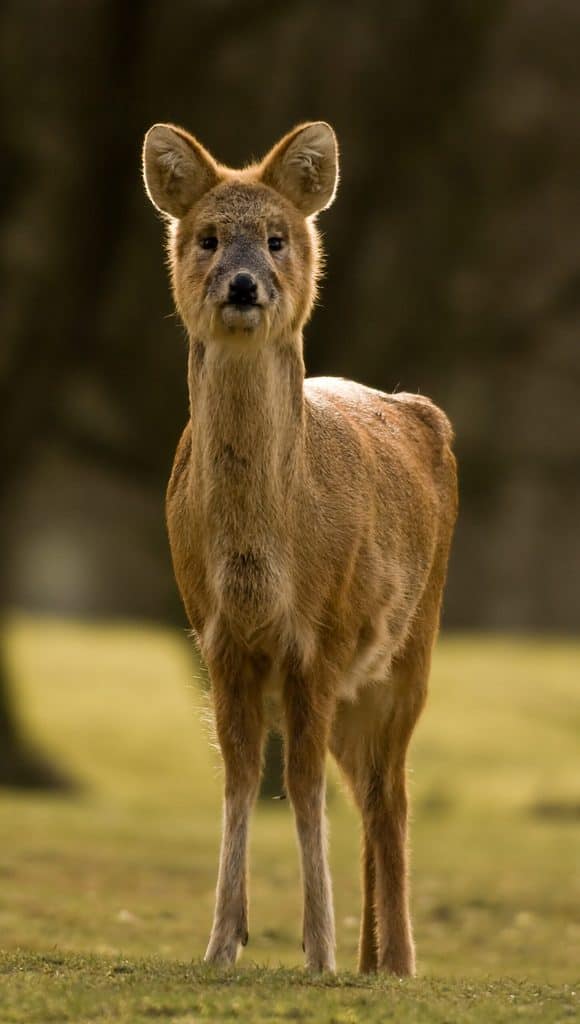
Vampire deer look pretty much like what you’d expect a deer to look like, but with one big exception: their extended, vampire-like teeth. But they don’t use them for sucking blood or anything like that — in fact, deer fangs are mostly used as weapons by competing males, fighting either for territory or for breeding females. They serve pretty much the same role as antlers in other deer.

So there’s not much to be afraid of when it comes to this creature, particularly as they stand at only about two feet tall and are one of the smallest deer species in the world. But despite their size, they’re able to adapt to a variety of habitats. This explains why, although they’re native to parts of China and Korea, there’s also a population of vampire deer in England, not far from London: they escaped from sanctuaries and were able to adapt to the British countryside.
Goblin shark
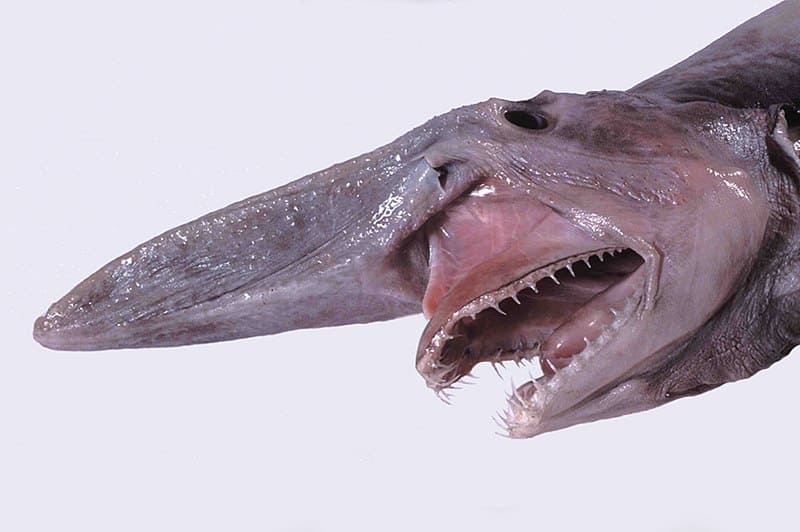
While most of the creatures we’ve looked at were sort of cute, the goblin shark is impressive but hardly cute. The deep-sea shark has a slender body and spends most of its time at depths of over 270 m (890 feet). The species is called a “living fossil” as it’s the only surviving species of a family that is 125 million years old. However, its most striking feature is the protruding jaws that have prominent, razor-sharp, nail-like teeth. Its snout is also equipped with sensory organs called the ‘ampullae of Lorenzini’ that allow it to detect electric fields emitted by its prey — very useful for hunting.
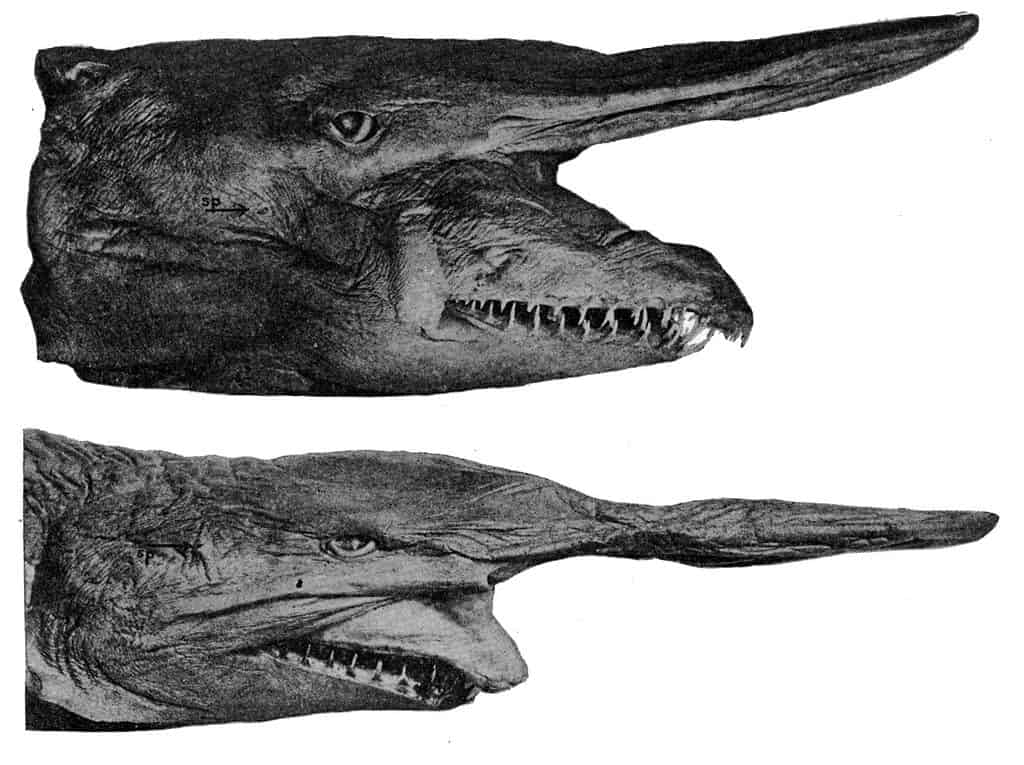
While its anatomy suggests that it is quite inactive and sluggish, observations of living goblin sharks are scant, and we don’t know all that much about it. We also don’t know just how deep the shark can go and much about its behavior remains a mystery to be unraveled by future scientific research.
Turritopsis nutricula/Turritopsis dohrnii
This small jellyfish has an astonishing superpower: it can live forever. After it reaches sexual maturity as a solitary individual, it can revert to a sexually immature, colonial stage; and as far as we can tell, it can go through this cycle indefinitely, making it biologically immortal. This ability to reverse the biotic cycle is, as far as science has figured out, unique in the animal kingdom — though researchers are studying it and looking at ways to adapt at least some of this mechanism in humans.

There’s a bit of a classification issue with this immortal jellyfish. Several different species of the genus Turritopsis were formerly classified as T. nutricula, including the “immortal jellyfish”. But now, researchers have reclassified it as T. dohrnii. Researchers note that the reversal of aging happens when the jellyfish is exposed to an environmental threat or becomes sick or old.
Hairy frog
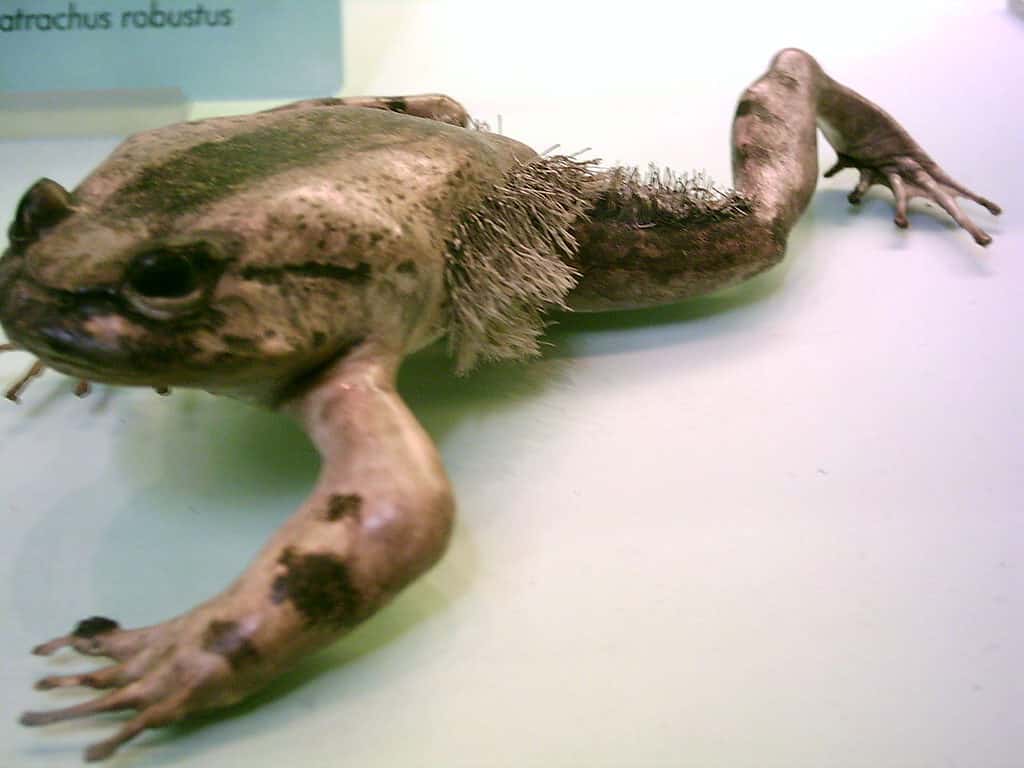
The hairy frog (also called the ‘horror frog’ or ‘wolverine frog’) is, believe it or not, not hairy. The hair-like structures are actually dermal papillae — a sort of fibrous skin that also contains arteries and is thought to enable the frog to absorb more oxygen. It’s only the males that develop this structure, and it’s thought that it helps the males stay alongside the eggs for a longer period, as the eggs are in the water.
The hairy frog also has remarkable retractable “claws”. These are not real claws as they are made of bone, not keratin, and if the frog wants to use them, it needs to break the bones of its toe and pierce through its skin. When the frog is grabbed or attacked, it forces the sharpened bones through its skin and uses them for defense. It’s not known exactly how these claws retract, which makes them all the more fascinating.
Hammerhead bat
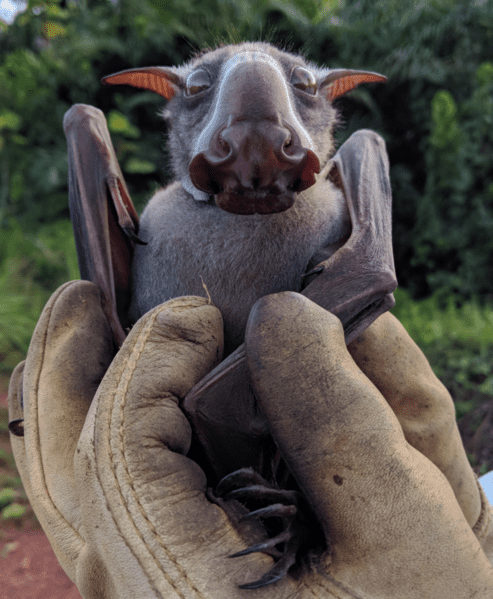
All bats are remarkable, but the hammerhead stands out with its broad, flat head and long, pointed ears. This eerie creature has fascinated scientists and the public alike with its unique peculiarities. The species is the most sexually dimorphic bat in the world, meaning there are great differences between males and females. Males and females even differ in how they look for their preferred food (fruits): females trap-lining, visiting well-established routes even if they have less food, while males travel for longer distances (up to 10 km) in search for areas rich with food.
However, although mangoes and figs are what this species prefers eating, some carnivorous behavior has been observed: hammerhead bats were observed to attack chickens to drink their blood and scavenge for meat.
Sea pig
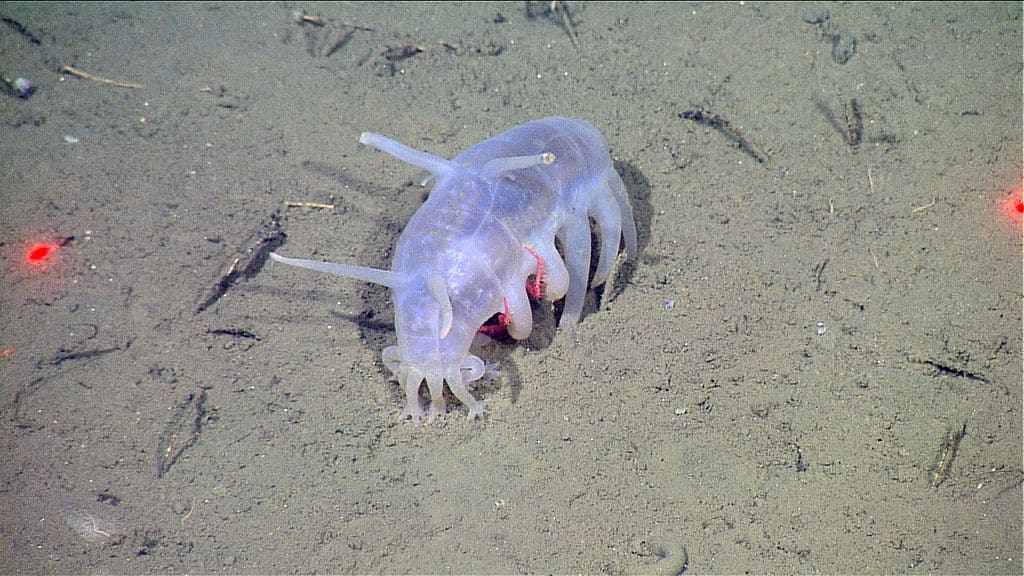
The sea pigs are a genus of deep-sea sea cucumbers and you’d be excused for thinking they’re not from this planet. With its soft, translucent body and tentacle-like tube feet that it uses to look for food through the sea substrate, the sea pig is a distinctive and unusual creature.
They live in the deep parts of the ocean, specifically on the abyssal plain in the Atlantic, Pacific and Indian Oceans, at depths of over 1,200 to 5,000 meters (3,900 to 16,400 feet). They grow to 4 to 6 inches (10 to 15 centimeters) in length and their skin contains a toxic chemical that is poisonous to other creatures. The sea pigs also have a unique reproductive system: in both males and females, they have only one gonad, so one ovary in females and one testis in males.
Pink fairy armadillo
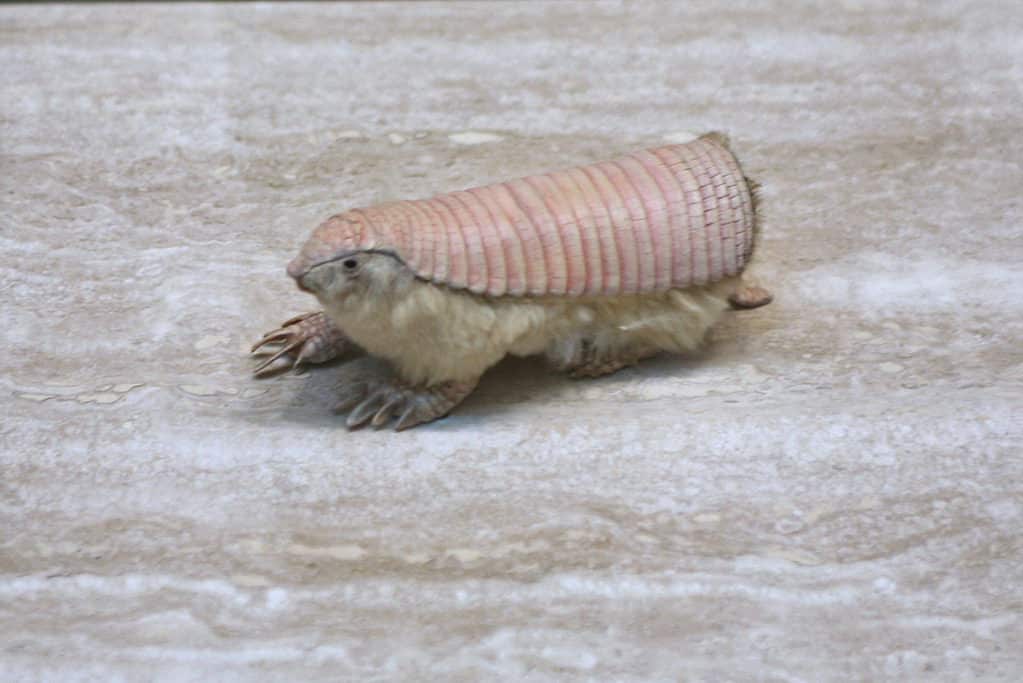
It’s the smallest species of armadillo and like its cousins, it has a bony armor shell — except this one has it in a shade of pink. It lives in scrubby grasslands and likes dry places where it burrows underground. Ants and larvae are its main food source while underground, though it has also been observed to eat snails and worms as well as fruits. The creature spends most of its time underground, and it is extremely sensitive to environmental changes and stress (like temperature and humidity).
Unfortunately, we don’t know how threatened this creature is because there’s not enough observation data on it. However, given that it seems to inhabit only a smart part of Argentina and it is very sensitive, it’s likely that not too many individuals survive.
Narwhal
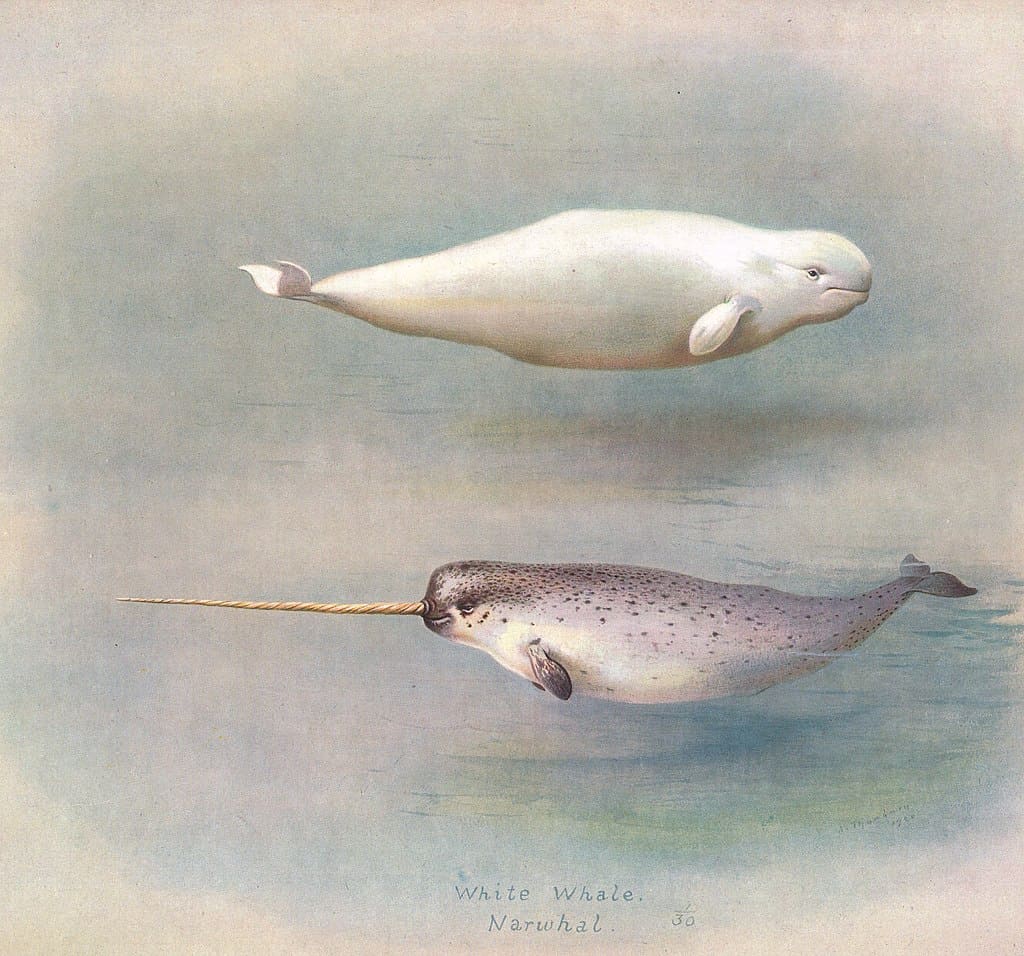
You couldn’t have a list like this without narwhals. Seriously, horned whales? You can’t make this up. The most striking feature of the male narwhal is a single long tusk, which is in fact a canine tooth. The tooth protrudes from the left side of the upper jaw through the lip, spiraling up and growing throughout life. The tooth can reach a length of over 3 meters (10 feet) and weighs around 10 kg (22 lb). Around 1 in 500 males have two tusks, and females can also get them, though only in about 15% of cases.
Researchers have long investigated the purpose of this tusk. It’s obviously tempting to think of it as a weapon, but it cannot be that useful since females (which rarely have the tusk) seem to live longer than males. It’s been theorized that the tusk is a sexual trait, much like antlers on a stag, but that doesn’t tell the full story. Recent research showed that the tooth is actually a highly innervated sensory organ with millions of nerve endings, and males rub tusks together as a form of communicating information about water characteristics.
Most of the creatures on this list are poorly understood and under threat, in large part because of the way we are altering their habitats and changing ecosystems. More often than not, creatures with unique adaptations are the ones that can survive drastic changes like the ones we are imposing on the planet. It’s estimated that around 150-200 plant and animal species go extinct on average every day.
But perhaps, if we learn more about them, and care a bit more about them, we just have a chance to save them from the damage that we ourselves are causing. The more people care about conservation, the more support conservation efforts are likely to gather. Life on Earth is wondrously diverse and special — we’d be wise to protect it.






